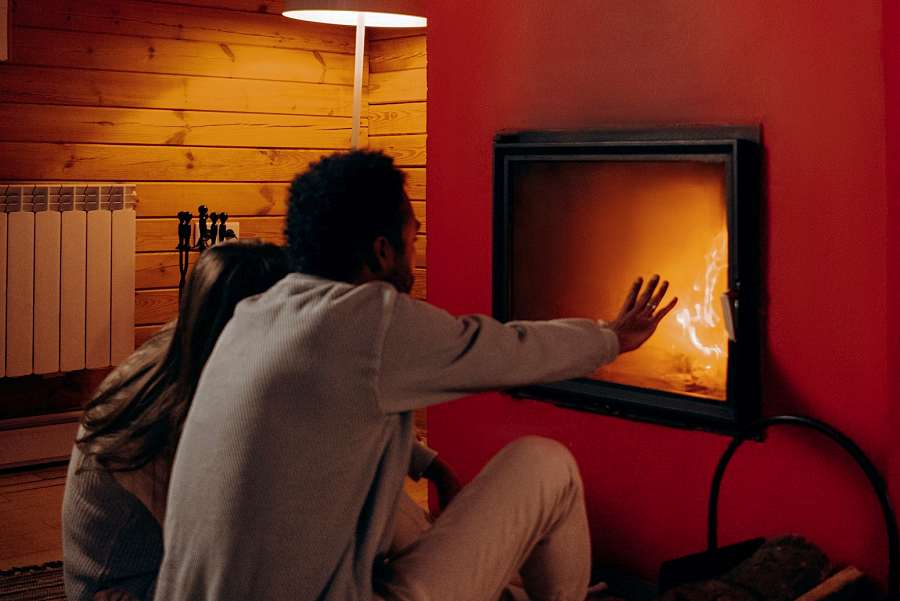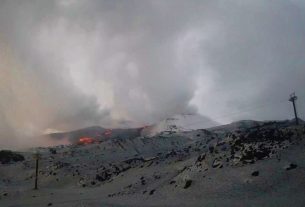Sun 28 May 2023:
Research shows that the world is undoubtedly warming. And, as the global average temperature keeps rising, heatwaves are increasing in their frequency, duration and intensity for most of the world’s regions.
But that doesn’t mean cold weather will disappear entirely. While annual extreme cold events are becoming less frequent and less intense, as you’d expect in a warming world, researchers suggest the climate systems that drive anomalously cold weather will continue to cause cold snaps globally into the 21st century. As we become more accustomed to a warmer world, we become less accustomed to these cold events, and therefore more vulnerable.
Being exposed to cold temperatures can increase the risk of hypothermia, frostbite, and other cold-related illnesses like cardiovascular and respiratory diseases. That’s especially true for people who are homeless, live in poorly insulated homes, or who cannot warm their homes using heaters, hot water bottles and electric blankets.
As we’re writing this article, South Africa is heading into winter. The first cold fronts have already reached the country’s south-western regions of Cape Town and surrounds, and the interior has started to experience cooler weather. Rolling blackouts known as loadshedding exacerbate the situation; loadshedding is often worst during the winter months due to the heightened pressure on the electrical grid as people try to heat their homes and keep lights on during the longer hours of darkness.
As researchers who have been exploring extreme temperature events and thermal comfort in South Africa, we have some advice about how to keep yourself as warm as possible during the winter months.
Our research
South Africa is often marketed to tourists as a “sunny” holiday destination. The country experiences warm summers and frequent clear skies, providing an ideal destination for beach vacations.
But its winters can be bitterly cold, particularly in the mountainous regions of the Drakensberg-Maloti and the Cape Fold Mountains, and in towns such as Sutherland in the Northern Cape province.
Our research has explored trends in extreme climate events over the past six decades.
Using data from indices developed by expert teams from the World Meteorological Organisation, we have identified extreme cold events across South Africa’s nine provinces. Our research confirms that these events are occurring less often and for shorter periods than in previous decades. The duration of extreme cold events is decreasing at a rate of 1 day per decade; the number of these events is decreasing by 0.2 events per decade.
Provincial trends
However, for some locations in the Western Cape, Eastern Cape and North West provinces, these average trends do not hold true. Cold waves in these locations are increasing in duration.
An analysis of the Universal Thermal Climate Index outputs for Southern Africa over the period 1979 to 2021 confirms that large areas of the South African interior still experience slight cold stress from June to August, while the high-lying mountainous regions experience moderate cold stress in the middle of each year.
There have been several newsworthy extreme cold events in recent years that have seen low temperatures and snowfall affecting various regions of the country. One, in March 2016, was unseasonal (South Africa’s winter months are June to August) – southern regions of the Western Cape experienced temperatures below -6°C, which is unusual for that time of the year.
In June and July 2019, Gauteng and the Western Cape experienced several cold fronts that led to consecutive cold days and nights and resulted in one reported casualty due to hypothermia in Dobsonville, Soweto and one in Sea Point, Cape Town.
In July 2021, a severe cold snap, caused by a succession of cold fronts making landfall over South Africa, resulted in record-breaking temperatures and snowfall across many parts of the country, including the Western Cape, Eastern Cape, and KwaZulu-Natal.
These events are a reminder of how dangerous extreme cold can be. Here’s how you can mitigate its effects.
Some tips
First, it’s important to know your risks:
- Infants (younger than 1 year) lose body heat more easily than adults.
- Adults over 65 are more susceptible to extremely cold temperatures due to their slow metabolisms and levels of physical activity.
- People who spend longer periods outdoors, including homeless individuals, sportspeople and outdoor workers, are at increased risk for cold-related health problems.
However, everyone should take precautions to prevent cold exposure and minimize the risk of cold stress. These include the following tips:
- Limit your time outdoors, where possible.
- Dress warmly (thermal clothing, jerseys and closed shoes) and cover up exposed skin to reduce the risk of hypothermia.
- Close windows and even use thicker curtains in the winter evenings to keep in the heat.
- Identify and close gaps in doorways and window frames that could be letting in the cold.
- Insulate homes and buildings to reduce the need for heating and retain any heat generated between loadshedding.
- Intensify your physical activity.
- Invest in some extra and thicker blankets.
- Stay informed about the latest loadshedding schedules to ensure you can cook warm meals while the power is on.
- Stay informed and monitor the local media about the latest weather updates and warnings.
Policy shifts
In addition to these individual measures, broader policy solutions can help mitigate the impact of loadshedding during extreme cold weather. These include increasing investment in renewable energy, improving the electricity grid’s efficiency, and implementing targeted measures to support vulnerable populations and communities during loadshedding periods such as by providing shelters and soup kitchens.
While the push for these policies continues, make sure you dress in layers and stay indoors as much as you can this winter.
Conversation Authors:
Adriaan Van Der Walt
Senior Lecturer of Physical Geography and GIS, University of the Free State
Dr Adriaan van der Walt, Lecturer in the Department of Geography at the University of the Free State (UFS), focuses his research on biometeorology (a specialist discipline exploring the role and climate change in physical and human environments) as well as climatology and geographic information systems.
______________________________________________________________
![]()
Jennifer Fitchett
Associate Professor of Physical Geography, University of the Witwatersrand
My research is situated within the discipline biometeorology, exploring the impacts of climate change on both the natural environment and human populations. My published research can be grouped into three main themes: 1) long term climate and environmental change throughout the late Quaternary reconstructed from palaeoenvironmental proxy records, 2) contemporary climate change over recent decades and 3) the impact of these climatic changes on tourism. This research has involved the quantitative analysis of climate records and palaeoenvironmental proxies from Iran, Lesotho and South Africa, and has involved collaboration with researchers from Iran, the United Kingdom, Sweden and South Africa.
______________________________________________________________
![]()
Sarah Roffe
Researcher, Agricultural Research Council
I am a climate researcher based at the Agricultural Research Council. My research focus is on climate change aspects across southern Africa. I focus largely on the impacts thereof considering changes and interannual variability for aspects of rainfall and temperature and severe weather events thereof as well as atmospheric circulation pattern changes. My research also focuses on biometeorological aspects, such as exploring thermal climate implications on human health.
This Article originally published in The Conversation Click Here
______________________________________________________________
FOLLOW INDEPENDENT PRESS:
TWITTER (CLICK HERE)
https://twitter.com/IpIndependent
FACEBOOK (CLICK HERE)
https://web.facebook.com/ipindependent
Think your friends would be interested? Share this story!





